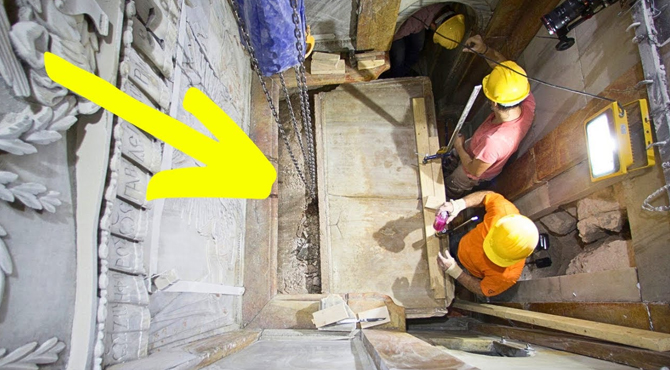Scientists have opened the tomb believed to be that of Jesus Christ in the Church of the Holy Sepulchre in Jerusalem. The tomb, sealed in marble for centuries, is said to be the resting place of Jesus’s body for three days after his crucifixion. The remarkable discovery, after removing the lid for the first time in 500 years, has stirred both awe and debate.
The tomb had been sealed since at least 1555 to protect it from pilgrims who sought relics, but doubts arose due to the numerous reconstructions of the church over the centuries. The recent revelation has provided a miraculous glimpse into the past, with a limestone shelf believed to be the spot where Christ’s body lay.
Archaeologist Frederick Hebert of National Geographic, a partner in the project, expressed amazement at the find, stating, “The most amazing thing for me was when we removed the first layer of dust and found a second piece of marble.” This previously unknown gray marble slab bore an intricately inscribed cross, believed to have been carved by Crusaders in the 12th century.
The discovery is seen as tangible proof that the current location of the shrine aligns with the spot revered by pilgrims for centuries. The repeated destruction and reconstruction of the church over time had cast doubts on whether the shrine remained in its original place.
The unveiling occurred in the presence of leaders from the Greek and Armenian Orthodox Churches, as well as Franciscan monks responsible for the church. Negotiations to open the tomb for vital repairs began in 1959, with decisions requiring approval from a status quo committee representing the three religious leaders. This committee’s slow decision-making process has made any changes or repairs to the church challenging.
The Church of the Holy Sepulchre’s key has been held by a Muslim family for 500 years, a testament to the unique interfaith dynamics in Jerusalem. Frederick notes the rarity of being allowed to conduct this work, emphasizing the triumph of negotiation.
Despite attracting thousands of pilgrims daily, the research team had less than three days to clean and explore the tomb. Using ground-penetrating radar and thermographic scanners, they recorded valuable data for future analysis. A team of 35 conservation experts spent 60 hours meticulously removing dirt and documenting every step of the process.
While the findings are significant, Frederick acknowledges that without artifacts or bones, certainty about the tomb’s identity remains a matter of faith. The data collected will undergo thorough analysis, with the goal of creating a virtual reconstruction of the tomb, offering a unique view into this historic and sacred site.
As the world awaits further revelations, the unsealing of Jesus’s tomb stands as a testament to the delicate intersection of faith, history, and scientific exploration.










